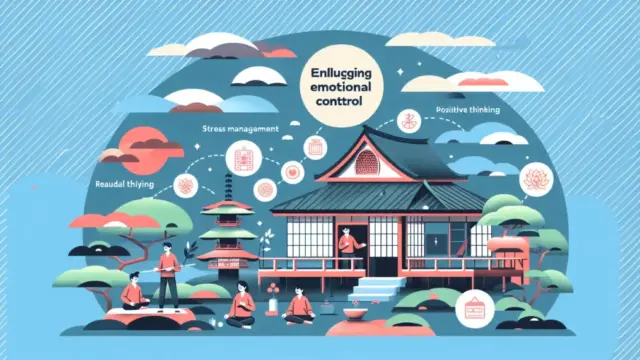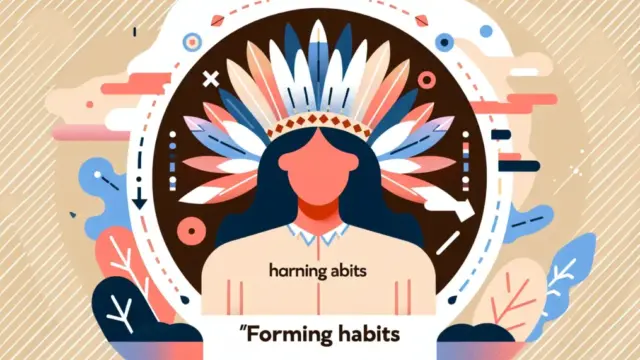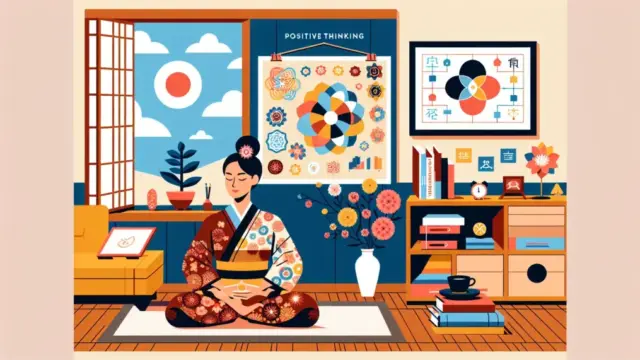Life is a grand adventure, and it’s important to carve out your own path to ensure a fulfilling future. By creating a blueprint for your life, you can clarify what you truly desire and the direction you want to take. In this blog, we’ll explore how to deepen your self-awareness, set meaningful goals, and develop effective habits.
Anyone can design their own life. With a little creativity and intention, your future can transform dramatically. So let’s dive in and start crafting that life blueprint together, paving the way for a bright future.
- Learn the importance and key elements of life design
- Discover the benefits of self-analysis and journaling
- Understand how to set SMART goals and create actionable plans
What is a Blueprint for Life?
Creating a blueprint for life is crucial for understanding how we want to live our lives. By clarifying what we truly want and the direction we should take, our daily choices and actions become more meaningful. Life design goes beyond mere dreams and wishes; it serves as a guiding principle for turning those aspirations into actions. In this section, we’ll explore the importance of life design and the fundamental elements involved in creating your own blueprint.
The Importance of Life Design
Life design helps us live our lives more fully. By setting specific goals, we can find meaning in our daily activities. Additionally, having a blueprint reduces future uncertainties, allowing us to move forward with greater confidence. Designing your life is the first step toward building a fulfilling existence.
Engaging in life design allows us to reassess our values and priorities. This process helps us choose our own paths without being swayed by external influences. By clarifying what truly matters to us, we can take the necessary steps to pursue those values.
- Life design serves as a guide to achieving fulfillment
- Setting specific goals brings meaning to daily activities
- Reassessing your values helps clarify your decision-making criteria
Fundamental Elements of Creating a Blueprint
To create a life blueprint, it’s essential to understand several fundamental elements. First, deepening your self-awareness is key; knowing your strengths and weaknesses enables you to set appropriate goals. Additionally, having a long-term vision is vital. By contemplating what you want to achieve and the kind of life you wish to lead, you can craft a unique blueprint for yourself.
Moreover, developing a concrete action plan is indispensable. By clarifying the steps needed to achieve your goals, you can devise a feasible plan. Setting small objectives and building upon them allows you to move forward with confidence.

If you’re interested in diving deeper into related information, check out this article on “Mastering Goal Setting to Transform Your Life: Concrete Steps!.” This piece discusses the importance of goal setting and provides practical methods, enriched with personal experiences, to help you make your life design more achievable.
- Deepening self-awareness is crucial
- Having a long-term vision clarifies your blueprint
- Creating a specific action plan makes achieving goals possible
Cultivating Self-Awareness: Essential Habits for Personal Growth
Deepening self-awareness is a crucial element in crafting the blueprint for your life. By understanding yourself better, you can gain clarity on what goals to set and which direction to take. In this section, we will explore methods for self-analysis, discuss the benefits of keeping a journal, and suggest specific habits to enhance your self-awareness.
Methods of Self-Analysis
Self-analysis is the first step in getting to know yourself. By understanding your strengths, weaknesses, and values, you can clarify what is truly important to you and what kind of goals you should pursue. A practical approach is to reflect on your past experiences and achievements and consider the situations where you felt you truly thrived.
Incorporating feedback from others can also be incredibly effective. Asking trusted friends or family members to share their perspectives on your strengths and areas for improvement can help you see yourself more objectively. Through this process, you will deepen your self-awareness and gather valuable insights that can inform your life design.
- Self-analysis is the first step to knowing yourself
- Reflecting on past experiences and achievements deepens understanding
- Utilizing feedback from others can be very effective
The Benefits of Keeping a Journal
Keeping a journal is a fantastic habit for enhancing self-awareness. By documenting daily events and emotions, you can become more aware of your thought and behavior patterns. Furthermore, looking back on your entries can help you recognize your growth and boost your motivation.
Additionally, journaling can be a powerful tool for processing emotions. When you experience stress or anxiety, putting those feelings into words can help organize your thoughts and allow you to reflect on yourself more calmly. This practice supports the deepening of self-awareness and lays the groundwork for a more concrete life blueprint.
- Journaling is an effective means to enhance self-awareness
- It provides an opportunity to recognize thought and behavior patterns
- Organizing your emotions can lead to inner peace
Setting Goals and Creating Action Plans
To turn your life blueprint into reality, having clear goals and a corresponding action plan is essential. Without goals, it’s easy to lose direction and let daily life drift by. In this article, we’ll discuss how to set SMART goals and how to create and implement specific action plans. By understanding these concepts, you’ll be able to sketch out your life blueprint more clearly.
How to Set SMART Goals
SMART goals are specific, measurable, achievable, relevant, and time-bound objectives. Utilizing this framework helps clarify the direction you want to pursue. The first step is to set a goal that is “specific.” Instead of saying “I want to exercise more,” you might say, “I will jog for 30 minutes three times a week.”
Next, it’s crucial that your goal is “measurable.” This means you should define clear metrics or deadlines to track your progress. Additionally, your goal needs to be “achievable.” It’s important to set realistic goals that fit within your capabilities. Also, ensure that your goal is “relevant” to your life blueprint, as this will help keep your motivation high. Finally, establishing a “deadline” for your goal makes it easier to create a concrete plan for taking action.
- SMART goals are specific, measurable, achievable, relevant, and time-bound.
- Setting specific goals serves as a guide for your actions.
- Having a deadline makes it easier to take action.
Creating and Implementing an Action Plan
Once you’ve set your goals, the next step is to create a specific action plan to achieve them. An action plan outlines the steps you’ll take to move toward your goal. Start by breaking your larger goal down into smaller, manageable steps. This approach makes it easier to progress one step at a time and fosters a sense of accomplishment.
It’s also important to set specific deadlines within your action plan. By clearly stating what you need to do and by when, you’ll find it easier to execute your plan. To maintain your momentum, create a system to encourage yourself along the way. Celebrating small successes and tracking your progress can help keep your motivation strong.
- Breaking down goals into smaller steps makes it easier to achieve them.
- It’s crucial to set specific deadlines within your action plan.
- Creating a system to encourage yourself will help you stay on track.
Mastering the Art of Habit Formation
To turn your life blueprint into reality, it’s essential not only to set goals but also to build daily habits that support those goals. Habit formation is the process of transforming actions into behaviors that become second nature, making it easier to achieve your objectives. In this section, we’ll explore the psychology behind habit development and share tips on how to maintain your daily actions. By understanding these concepts, you can cultivate better habits and effectively realize your life’s vision.
The Psychology of Habit Formation
Psychological factors play a significant role in habit formation. Our brains strive to conserve energy by “automating” repetitive actions. Initially, you need to consciously engage in these behaviors, but over time, as they become habits, they can be performed effortlessly.
A key strategy for establishing habits is setting up a “trigger.” A trigger is a cue that prompts you to start a habit, which can be a specific time, place, or even another action. For example, if you want to develop a habit of jogging first thing in the morning, you might decide to change into your workout clothes as soon as your alarm goes off. This approach helps solidify the habit more effectively.
- Habit formation is a process where the brain automates behavior
- Setting triggers can accelerate the habit-building process
- Repeating actions leads to habits becoming second nature
Tips for Maintaining Your Habits
To sustain your habits, there are several strategies you can employ. First, it’s crucial to set achievable goals that fit your lifestyle. Starting small and accumulating little successes can boost your confidence and encourage you to take the next step. Additionally, visualizing your progress can be highly effective. Whether it’s marking a calendar or using an app to track your efforts, seeing your achievements can enhance your sense of accomplishment.
Furthermore, seeking support is vital. Sharing your goals with friends or family can provide you with encouragement and feedback, making it easier to stay motivated. Having companions on the same journey not only makes the process more enjoyable but also helps you stay accountable.
- Set realistic goals and accumulate small successes
- Visualize your progress to enhance your sense of achievement
- Gain support to maintain your motivation more easily
Conclusion
Creating a blueprint for your life is a crucial step toward achieving a fulfilling future. By deepening your self-awareness, you can clarify your values and the goals you aim to pursue, allowing you to develop a concrete action plan. Additionally, utilizing techniques for habit formation can help you maintain your daily actions, steadily progressing toward your objectives. By combining these elements, your life design will become more specific and attainable.
To design your own life and secure your ideal future, start by taking a small step today. The blueprint for your life is in your hands. Gather your courage and move forward toward what lies ahead.
- Deepening self-awareness clarifies goal-setting
- SMART goals and a concrete action plan are essential
- Use habit formation techniques to maintain daily actions
Now is the time to take the first step in sketching out your life’s blueprint. We’d love to hear your thoughts and experiences, so please share them in the comments! We look forward to your insights!





















































Comment